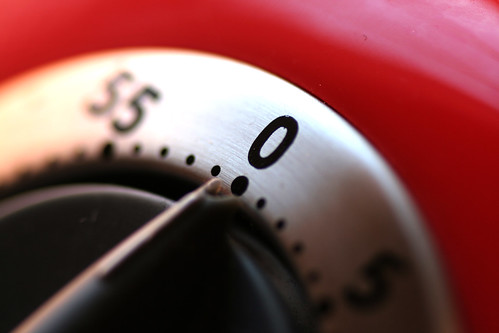 The concept of periodization has been around for quite some time in the sports world. Coaches build training schedules around "periods" of training and recovery in a cyclical fashion.
The concept of periodization has been around for quite some time in the sports world. Coaches build training schedules around "periods" of training and recovery in a cyclical fashion.
However, the more perspectives you read on periodization in the training world, the more you realize that certain elements of it have been a little bent and twisted out of shape. More on that later.
But at least periodization actually exists in the world of sport training. We know that the timing of training sessions is important. Recovery is critical as training adaptations require time without subsequently "de-training". So what makes injury recovery any different?
Absolutely nothing.
Before I even broach the idea of periodization in an injury recovery context, let's set a few things straight in the training community. There are some elements of periodization that have been applied poorly over the years. For example, the idea of "building a base" for endurance athletes - while leaving any form of intensity-based training on the sidelines for the duration of this "base" period. Forgotten is the premise of "de-training", which goes in tandem with "training". Power output diminishes because, as the saying goes, "if you don't use it, you lose it".
(Sidebar: refer to one of my previous posts, "Base Happens", for an expansion on this concept)
But let's assume that we are using the principles of periodization correctly. What would prevent a physical therapist from using these same principles in the development of a "periodized" injury recovery program?
Some might call that a "protocol". But it is far more than that.
A periodized injury recovery program involves understanding the mechanisms underlying the training stimulus and response - just like a training program. In the injury recovery process, our goal is not so much to do "exercise", but to provide a stimulus that will, in effect, attain the desired response. This involves timing of stimuli with sufficient capacity for recovery (from the stimulus) and adaptation to the stimulus.
All of this demands that the patient understand what appropriate responses to training are - and aren't. The patient must have the tools that will allow them to recover from and adapt to those training stimuli. It includes an understanding of the impact of the most basic nutritional elements on the tissue repair and remodeling phases. Yes, that includes protein for tissue repair and carbohydrate for fueling the process of injury recovery and normal function of the immune system. Cognitive strategies are also important to diminish the adverse effects of cortisol in the recovery process.
There you have it: the foundations for injury recovery periodization.
So the next time you hear a patient proclaim that "they have been doing their exercises three times a day because that is what they were told to do", a few questions should arise. What is the intent of the activity? Is it the necessary stimulus to attain the desired response? What are the critical paramters of the stimulus required to attain an optimal response? And what is the time course for recovery from and adaptation to the stimulus?
You will find that the "home exercise program" takes on a new look - with periods of rest and recovery built in to more specific, focused exercise plans. The goal is to have a program that optimizes the injury recovery process. As they say, timing is everything - in optimal human performance and in injury recovery.
Photo credits: numb3r
 "Running Injuries: Etiology And Recovery- Based Treatment" (co-author Bridget Clark, PT) appears in the third edition and fourth editions of "Clinical Orthopaedic Rehabilitation: A Team Approach" by Charles Giangarra, MD and Robert C. Manske, PT.
"Running Injuries: Etiology And Recovery- Based Treatment" (co-author Bridget Clark, PT) appears in the third edition and fourth editions of "Clinical Orthopaedic Rehabilitation: A Team Approach" by Charles Giangarra, MD and Robert C. Manske, PT.
 Allan Besselink, PT, DPT, Ph.D., Dip.MDT has a unique voice in the world of sports, education, and health care. Read more about Allan here.
Allan Besselink, PT, DPT, Ph.D., Dip.MDT has a unique voice in the world of sports, education, and health care. Read more about Allan here.
 Top 5 finalist in three categories: "Best Overall Blog", "Best PT Blog" and "Best Advocacy Blog".
Top 5 finalist in three categories: "Best Overall Blog", "Best PT Blog" and "Best Advocacy Blog".